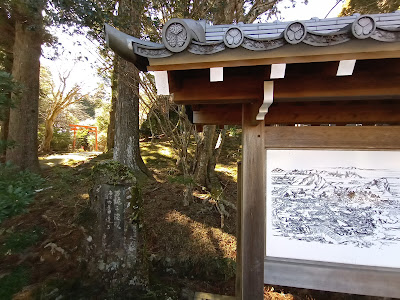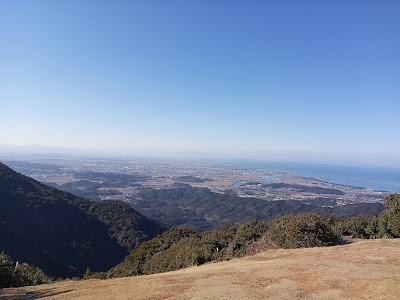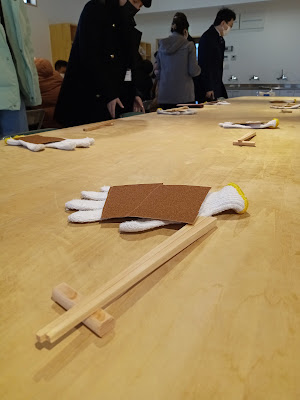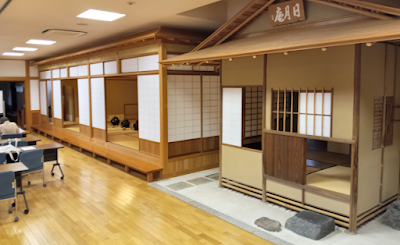Day 7, exploring Japanese religious experience, Mt. Asama's significance, and then paying a visit there
 |
| Torii at left, Tokugawa hollyhock marked tiles, birdseye display |
In the continuing sunny weather of late winter we learned about the religious landscape of sun and sea and mountains from Pr. H. to begin the day and then moved to the top floor of one of the biggest buildings on campus to enjoy the view over Ise city on the one side and the line of the mountains tied to Mt. Asama on the other side. There Pr. T. invited impressions from the international gathering of seminar participants on the subject of how best to describe Japanese relationships to (organized) religion. Certainly there are institutions that cultivate knowledge and experience, train experts, and care for people's needs during and after life. Moral direction and connections between the living and the dearly departed can be seen all around Japan today and in other times, but underneath the many facets that have some religious significance there is a foundational orientation to family and higher powers in some form which one engages with in crisis or in daily habits by paying one's respects, whether that is Hotoke-sama or kami-sama or possibly even followers of Abrahamic religions, for example.
After lunch our driver took us on the skyline "e-power road" near the top of Asama-yama where we stopped just before the parking area in order to walk up part of the way to the edge of the temple precincts as foot travelers would have climbed the 555 meters in earlier times. A big stone marker declared "dismount" (horses) and "deboard" here (for those being carried in norimono) before the grounds of the temple. Some mighty Japanese cedars are time travelers that have witnessed the many temple buildings and grounds being developed since the 1600s and before that, too, perhaps. Still visible today from earlier times before the early 1870s forcible split between Shinto and Buddhist elements on the grounds, we noticed things seen in shrines: torii, temizusha (hand rinsing trough with dragon spout), shimenawa with paper strips, rooflines of the Heian-era style of curving front, and the rope/rattle to announce one's presence when paying respects at a jinja. At the end we drove the last little section to the observation deck at the top of the mountain to admire the view.
 |
| Looking north along the Ise Bay and estuary of rivers of Ise City |



Comments
Post a Comment